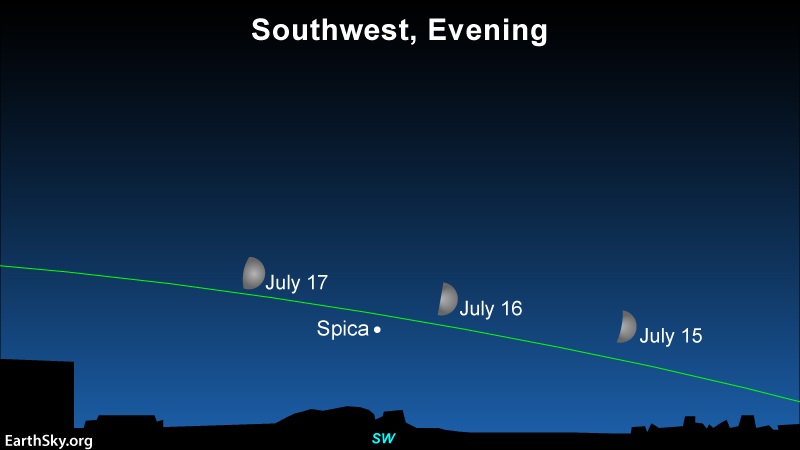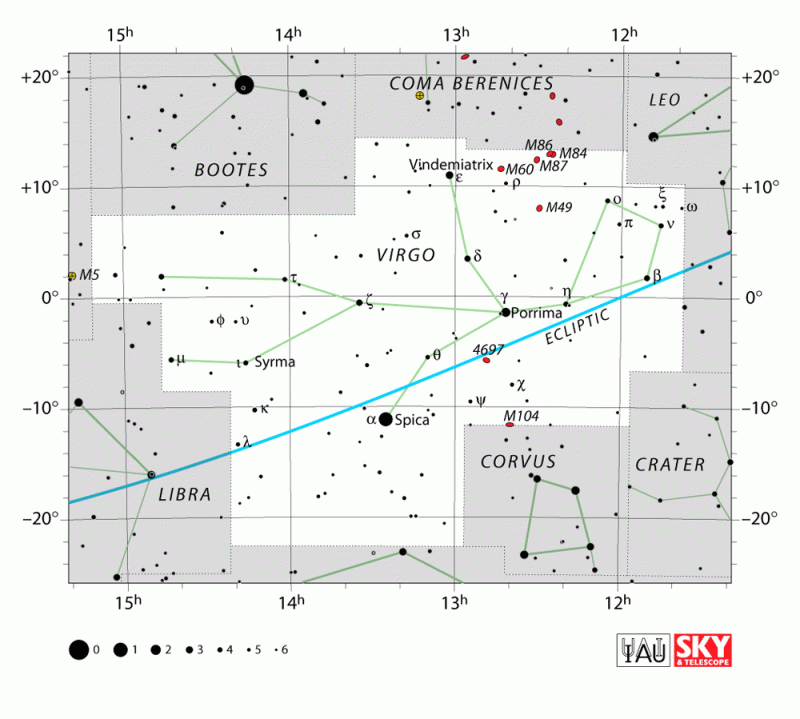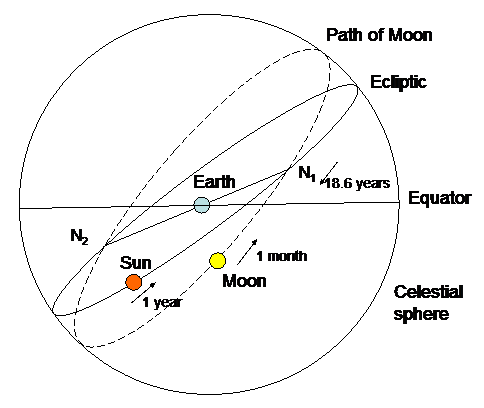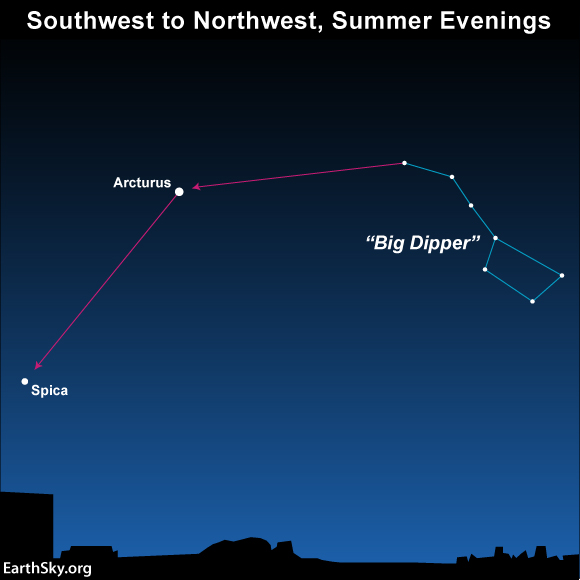
Moon meets Spica monthly
As darkness falls on July 15, 16 and 17, 2021, let the moon introduce you to Spica. It’s the brightest star to light up the constellation Virgo. Once every month, as the moon makes its monthly rounds in front of the constellations of the zodiac, the moon sweeps by Spica. The time will come when the moon will occult (pass in front of) this star. Afterwards, it’ll stage a series of 20 occultations, one per month.
The occultation series will take place from June 16, 2024, to November 17, 2025.
Right now, the moon is passing to the north of Spica each month. Yet – at the moment, at each monthly pass – the moon is slowly but surely appearing closer to Spica. That’s because, right now, the moon’s path is drifting southward in our sky. Eventually, its path will take it directly in front of Spica.
After the 2024-2025 occultation series, the moon will sweep to the south of Spica each month. Then another series of 20 occultations will take place from February 12, 2031, to July 15, 2032. After that, the moon will swing to the north of Spica again. Then another series of 20 occultations occurs from January 4, 2043, to June 6, 2044.
Spica occultations happen predictably
An occultation series of Spica recurs in a regular and predictable way. It happens because Spica lies only 2 degrees (4 moon-diameters) south of the ecliptic, which is the plane of Earth’s orbit around the sun projected onto the sky.
Earth orbits the sun, creating the plane of the ecliptic. And the moon orbits Earth. The plane of the moon’s orbit is inclined to the ecliptic by only about 5 degrees. So, for half of the moon’s monthly orbit, the moon travels north of the ecliptic. And, for half of its orbit, the moon travels south of the ecliptic.
The ecliptic can also be thought of as the sun’s annual path in our sky, in front of the backdrop stars. The sun passes to the north of Spica (in ecliptic longitude) yearly around October 17.


Lunar nodes travel westward upon the ecliptic
Twice a month, the moon crosses the ecliptic (Earth’s orbital plane) at points called nodes.
When the moon is traveling from south to north, it’s called an ascending node. And when the moon is going from north to south, it’s a descending node.
The lunar nodes don’t remain static upon the ecliptic. The nodes travel westward along the ecliptic, going full circle through the constellations of the zodiac in about 18.6 years.
Therefore, at any one point on the ecliptic, the moon swings from a maximum of 5 degrees north to 5 degrees south of the ecliptic. In other words, this lunar cycle brings the moon 7 degrees north of Spica, to 3 degrees south of Spica, and then 7 degrees north again every 18.6 years.
At that sweet spot between the extremes the moon presents a series of 20 occulatations from June 16, 2024 to November 17, 2025, and then again from January 4, 2043 to June 6, 2044.
You have to be at just the right spot on Earth to witness any one of these occultations.

Bottom line: Use the moon to find star Spica on July 15, 16 and 17, 2021. Spica is Virgo’s sole 1st-magnitude star. This beautiful blue-white star has served as a stellar beacon since time immemorial for recording the monthly wanderings of our wayward moon.











